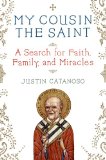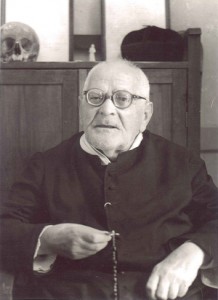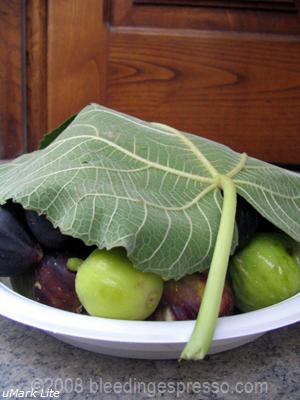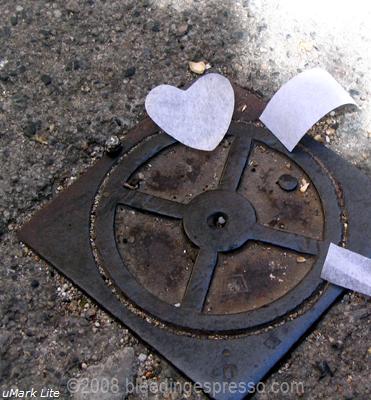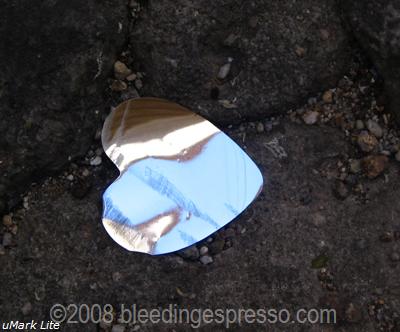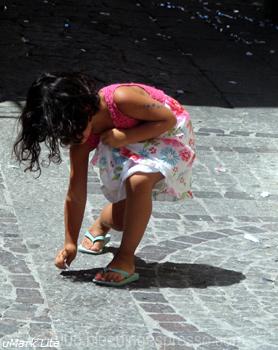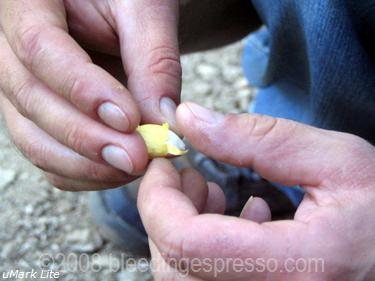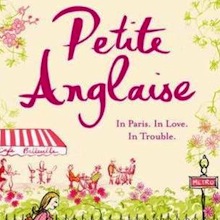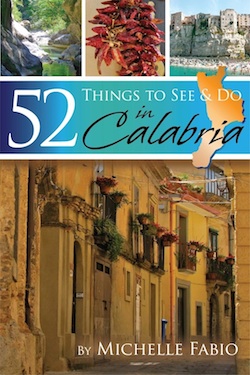Archive for the ‘life in calabria’ Category
Book Giveaway: My Cousin the Saint by Justin Catanoso
Cherrye of My Bella Vita and I teased you yesterday with an upcoming contest and today I have the details:
Book Giveaway:
1. Justin Catanoso, author of My Cousin the Saint: A Search for Faith, Family, and Miracles, will guest blog here today (below) and at Cherrye’s My Bella Vita tomorrow.
2. In order to be eligible to win a free, signed copy of Justin’s book, leave a question for Justin in the comments on one or both of his guest posts. You can leave as many questions as you like, but only one comment on each blog will count toward the contest (maximum of two entries per person).
3. Justin will pick some of your questions to be answered at his blog, JustinCatanoso.com, and we’ll let you know when to look for the answers.
4. You must leave your questions at or before 11:59 pm CEST on October 17, 2008 to be eligible for the contest. This contest is open to all readers around the world.
5. One winner will be drawn randomly from the eligible comments at Bleeding Espresso, another winner will be drawn from the eligible comments at My Bella Vita, and winners will be announced on the respective blogs October 20, 2008, marking the day of St. Gaetano’s canonization.
For those who look forward to a guest blogger on the 15th of every month, we’re featuring this month’s a little early (thanks Justin!) to make way for Blog Action Day on October 15th. You, too, can join the cause and blog against poverty. Sign up here.
And now, welcome Justin!
————
 It’s a genuine thrill to be hosted here on Bleeding Espresso to talk with you about my new book, My Cousin the Saint: A Search for Faith, Family, and Miracles (Morrow/HarperCollins). What could be better? This lovely site is managed with great skill and passion by a fellow Italian-American writer who lives in the same region where my Italian family is from and which is the setting of so much of my book. What I would like to share here is how this book came into being. The fact is, the idea for it wasn’t even mine!
It’s a genuine thrill to be hosted here on Bleeding Espresso to talk with you about my new book, My Cousin the Saint: A Search for Faith, Family, and Miracles (Morrow/HarperCollins). What could be better? This lovely site is managed with great skill and passion by a fellow Italian-American writer who lives in the same region where my Italian family is from and which is the setting of so much of my book. What I would like to share here is how this book came into being. The fact is, the idea for it wasn’t even mine!
On Oct. 20, 2005, I delivered a bittersweet commentary on National Public Radio titled “Our Cousin the Saint.” In 500 words, I tried to articulate some powerful forces that had been stirring in me for nearly two years. In late 2003, my family and I traveled to Italy and were lovingly embraced by long-lost relatives I never knew I had. One relative I learned about for the first time was Gaetano Catanoso, a contemporary of my grandfather’s, born in the same tiny Calabrian village of Chorio. Gaetano had been a priest for 60 years, and his service to the poor had been so extraordinary that he had been beatified by Pope John Paul II in 1997. At the time of our visit, he was one miracle shy of sainthood.
In 2004, back in the United States, my family found itself in desperate need of a miracle. My older brother Alan had been diagnosed with brain cancer, which took his life by Christmas of 2004. My NPR commentary aired ten months later, just three days before Gaetano’s canonization in St. Peter’s Square in Rome. In that piece, I spoke about my brother, my Italian relatives and whether our soon-to-be sainted relative had in any way answered our prayers. I had written elements of this story previously in several national magazines, including the Catholic Digest. I thought I was done with it.
But listening to my commentary in California was Randi Murray, a literary agent. She believed she heard the makings of a book and called to ask if I was interested in pursuing the story. I was flattered, and doubtful. I tried to put her off. I was busy. I have a wife and three daughters. I have two jobs–running a newspaper, teaching at a university. I had plenty of reasons to say no.
But during the canonization ceremony in St. Peter’s Square, where I was surrounded by relatives as well as pilgrims from around the world, I remembered being moved to ponder so many things I didn’t have answers to: where was my brother? What happened to my Catholic faith? Who was this saint in our family and why had I gone most of my life having no idea he ever existed? What does it mean to have someone so holy in the family tree? Does it mean anything?
That call from Randi Murray soon came to feel more like a gift, the means by which I could possibly set out in search of some answers. I put aside any notions that my now-sainted cousin was working his intercessory powers through a Jewish literary agent (even though my mother certainly believes that St. Gaetano has guided this entire project!) But I did come to believe Randi’s initial instincts that there really was a good story in all of this. HarperCollins thought so, too, and with a contract and advance in hand, I got started in the spring of 2006.
While my story sits within the context of a couple of centuries of Italian history and Catanoso family history, much of the contemporary action takes place between 2003 and early 2007. Special research and travel was required. To learn why saints are needed and how one becomes a saint, I spent several days in Rome and interviewed three vastly experienced Vatican saint makers. Then I headed deep into the toe of the boot of Italy– the region of Calabria–for nearly a month.
That’s when I slowly came to understand the life of the saint and the extraordinary way he still lives in so many of my relatives, of all ages. It was an extraordinary learning experience as my Italian relatives, who welcomed me into their hearts and homes as if I lived across the street, not across the ocean, revealed to me in so many ways the depths of their souls. Along with searching for the remnants of my own faith in Italy and America, I was also hunting for clues as to why my grandfather was among the very few Catanosos to emigrate, leaving Calabria in 1903 as a teen-ager, and ultimately making my American birth possible.
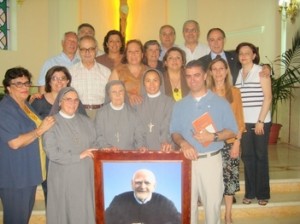 For me, a newspaper journalist for more than 25 years, this book represents the story of a lifetime. People the world over are charmed by the kind of humor and hospitality, the kind of love and simple zest for life that is purely Italian–la dolce vita. I was fully immersed in all of it, with the added benefit of being surrounded by newfound relatives. I met the recipient of a Vatican-sanctioned miracle and later interviewed her doctor. I heard miracle stories from so many Catanoso cousins. I shared long meals lovingly prepared and had in-depth conversations about their faith and our family. And tragically, I mourned with them as well, as the family patriarch died suddenly during my visit.
For me, a newspaper journalist for more than 25 years, this book represents the story of a lifetime. People the world over are charmed by the kind of humor and hospitality, the kind of love and simple zest for life that is purely Italian–la dolce vita. I was fully immersed in all of it, with the added benefit of being surrounded by newfound relatives. I met the recipient of a Vatican-sanctioned miracle and later interviewed her doctor. I heard miracle stories from so many Catanoso cousins. I shared long meals lovingly prepared and had in-depth conversations about their faith and our family. And tragically, I mourned with them as well, as the family patriarch died suddenly during my visit.
By the end of my month in Italy and coupled with my years of research, I knew I had a powerful story to tell–a story of faith, family and miracles.
Thank you so much for sharing this with us, Justin,
and best of luck with My Cousin the Saint!
Be sure to head over to JustinCatanoso.com for a video recounting Padre Gaetano’s “First Miracle,” and don’t forget to leave a question for Justin to be eligible for the contest!
Whatever You Do, Don’t Eat the Free Figs
The other day I came home and found this on my doorstep:
When P came home, I told him, but we still didn’t know the identity of our Fig Fairy even though I had asked around the neighbors.
P told me: “Don’t eat the figs!”
Because, um, we live in medieval times in which our nemici might foil our dastardly plans with tainted figs left outside our house? Please.
Needless to say, I ignored him and ate three of them later that evening.
And then was awake most of the night with a stomachache. Gah!
I pretended like I had no idea what I could’ve eaten to cause the discomfort as I certainly couldn’t tell P I ate the figs.
Thankfully, the pain passed and the next morning, before I discarded the figs, I ran into a woman who owned up to being our Fig Fairy. I breathed a huge sigh of relief as she’s certainly one of the nicest signore around–yet another one of my nonne in the village.
And only then did I tell P the full tale of the figs, which he, of course, found hilarious.
I’m thinking I’ll just listen to him next time — just in case.
love thursday: remnants of a wedding
Weddings are normally a big affair in southern Italy–think several *hundred* people invited–but sometimes couples choose to get married just in the comune in a simple ceremony. In mid-August, we had one of those here in the village, and this is what was left afterwards.
Lots of (heart-shaped) confetti:
Candy on the street:
And one little girl doing her part to clean the place up:
Yes, she’s using her skirt to hold the candies:
How cute is she?!
Happy Love Thursday everyone!
what’s cooking wednesday: almond joy
 No I’m not making candy bars (but I do love Almond Joys if you’re wondering).
No I’m not making candy bars (but I do love Almond Joys if you’re wondering).
For this What’s Cooking Wednesday, I want to tell you a little more about another of southern Italy’s major crops, the glorious mandorla, or as we know it, the almond.
History of Almonds
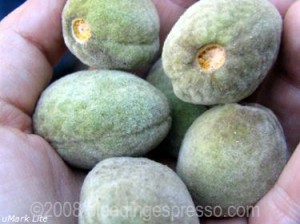 Almonds have been around quite a long time, making guest appearances in the Bible and Greek mythology among other ancient texts. One of the most popular uses of the almond in ancient times was to prevent intoxication, which is why they were often eaten throughout meals during Plutarch’s day.
Almonds have been around quite a long time, making guest appearances in the Bible and Greek mythology among other ancient texts. One of the most popular uses of the almond in ancient times was to prevent intoxication, which is why they were often eaten throughout meals during Plutarch’s day.
Almond trees are native to the Mediterranean region from the Middle East on over; here in southern Italy, almond trees are all over the place, so it’s not surprising that we love and use the almond early and often.
Health Benefits of Almonds
Almonds are one of the healthiest foods around as they can lower LDL (“bad”) cholesterol as well as the risks of diabetes and heart and cardiovascular diseases. They may also help you lose and maintain a healthy weight, increase your energy level, and prevent gallstones. Read more about the health benefits of almonds at The World’s Healthiest Foods.
The Almond in Calabria
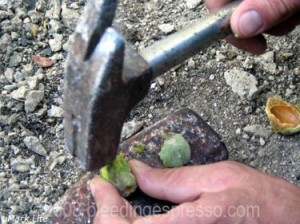 A common drink in Calabria and southern Italy throughout the summer is latte di mandorla or almond milk; almonds release their oils when crushed, and when mixed with milk, make a lovely, refreshing beverage. Many people also add sugar.
A common drink in Calabria and southern Italy throughout the summer is latte di mandorla or almond milk; almonds release their oils when crushed, and when mixed with milk, make a lovely, refreshing beverage. Many people also add sugar.
You will also find that many southern Italian dolci, sweets and desserts, contain almonds–my favorite are amaretti; and if you’re the drinking kind, how about some Amaretto Disaranno Originale? Yum!
And of course we all know of the tradition of giving sugared-coated almonds at weddings and other celebrations.
Not convinced of our passion for the almond yet?
We love the seed of the fruit of the almond tree so much around here, there is even a Calabrese song called Facci de n’ammendula mundata that sings its praises; the singer insists that if offered a pile of gold that weighs more than the almond, he would choose the almond because although the gold will eventually be spent, the beauty of the almond will stay with him forever.
Our Almonds
We happen to have an almond tree in our giardino–remember that P brings me the first almond blossom every year?
Well a few weeks ago when we were down in the garden with the pooches, P picked some almonds fresh off the tree, still in the green furry casings as seen above.
Throughout this post, you can see the process of shelling a fresh almond; after the above photo, P peeled the outer, yellow casing:
And here is the final result in my waiting hand:
Biting into a fresh almond reminded me a lot of crunching a water chestnut: crisp and clean. But then came the gentle flavor of almond and a slightly stronger aftertaste–a lovely, sweet reminder that I had just eaten something fresh, pure, and straight from our tree. Nothing bitter about it.
So what are you going to do with your almonds? I suggest:
- Banana Coconut Almond Bread from Susan at Food Blogga
- Easy Almond Brioche from Susan at Sticky, Gooey, Creamy, Chewy
- Polenta Olive Oil Almond Cake with Peaches in Honey-Basil Syrup from Jenn at The Left Over Queen
And by the way, all of these would go great with a Caffè Shakerato alla Cherrye!
Do you like almonds? What’s your favorite way to enjoy them?
Petite Anglaise by Katherine Sanderson
Simply loved this book by Katherine Sanderson; flew through it way too quickly.
Read on...
